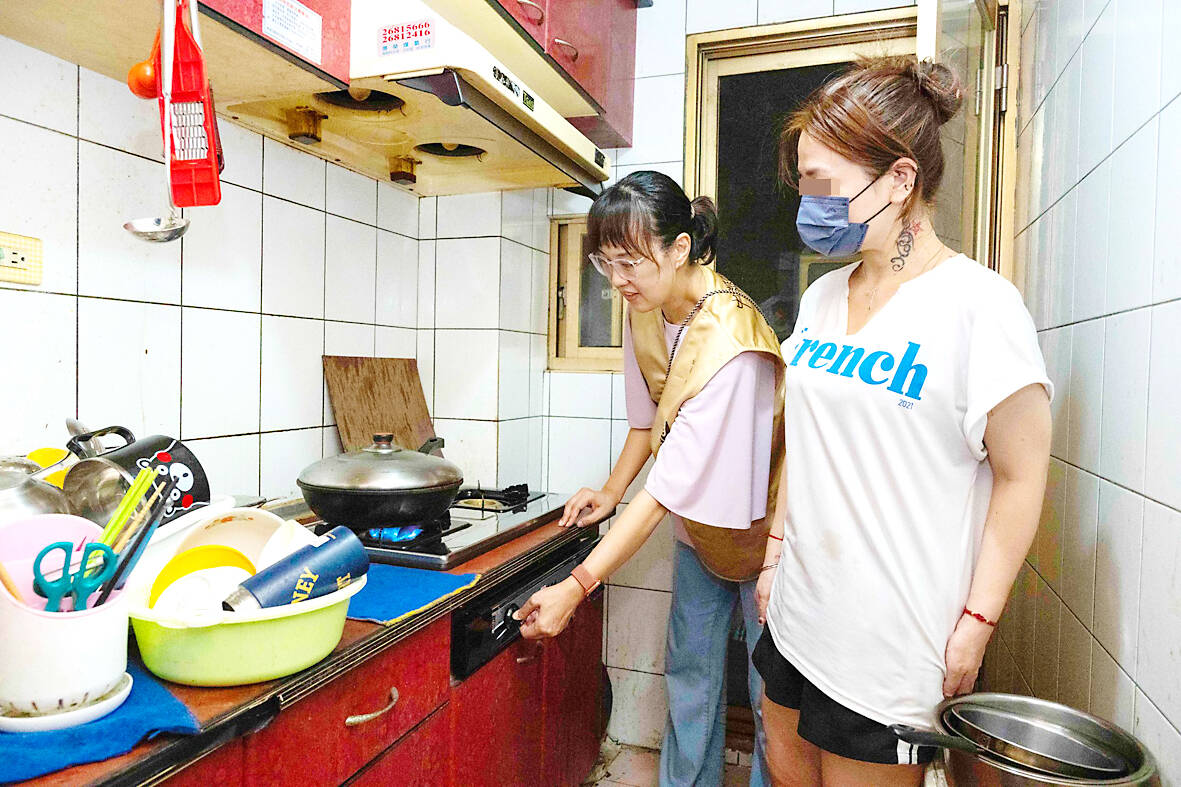Gas stoves kill 40,000 Europeans each year by pumping pollutants into their lungs, a report has found, a death toll twice as high as that from car crashes.
The cookers spew harmful gases linked to heart and lung disease but experts warn there is little public awareness of their dangers. On average, using a gas stove shaves nearly two years off a person’s life, according to a study of households in the EU and UK.
“The extent of the problem is far worse than we thought,” said lead author Juana Maria Delgado-Saborit, who runs the environmental health research lab at Jaume I University in Spain.

Photo courtesy of the New Taipei City Government Social Welfare Department
The researchers attributed 36,031 early deaths each year to gas cookers in the EU, and a further 3,928 in the UK. They say their estimates are conservative because they only considered the health effects of nitrogen dioxide (NO2), and not other gases such as carbon monoxide and benzene.
“Way back in 1978, we first learned that NO2 pollution is many times greater in kitchens using gas than electric cookers,” said Delgado-Saborit. “But only now are we able to put a number on the amount of lives being cut short.”
One in three households in the EU cook with gas, rising to 54 percent of households in the UK and more than 60 percent in Italy, the Netherlands, Romania and Hungary. The cookers burn fossil gas and eject harmful substances that inflame airways.
The report, which was supported by the European Climate Foundation, builds on research last year that measured air quality in homes to find out how much cooking with gas increased indoor air pollution. This allowed scientists from Jaume I University and the University of Valencia to work out ratios between indoor and outdoor air pollution when cooking with gas, and map indoor exposure to NO2.
They then applied risk rates of disease, sourced from studies on outdoor NO2 pollution, to work out the number of lives lost.
“The main uncertainty is whether the risk of dying found with outdoor NO2 from mainly traffic can be applied to indoor NO2 from gas cooking,” said Steffen Loft, an air pollution expert at the University of Copenhagen, who was not involved in the research. “But it is a fair assumption and required for the assessment.”
The results fall in line with a study in the US in May, which found gas and propane stoves contribute up to 19,000 adult deaths each year.
The EU tightened its rules on outdoor air quality this month but it has not set standards for indoor air quality. The European Public Health Alliance (EPHA) has urged policymakers to phase out gas cookers by setting limits on emissions, offering money to help switch to cleaner cookers and forcing manufacturers to label cookers with their pollution risks.
“For too long it has been easy to dismiss the dangers of gas cookers,” said Sara Bertucci from the EPHA. “Like cigarettes, people didn’t think much of the health impacts — and, like cigarettes, gas cookers are a little fire that fills our home with pollution.”
People can partly protect themselves from fumes when cooking by opening windows when they cook and turning on extractor fans.
Delgado-Saborit said she and her husband grew up in homes where cooking was done on electric hobs, which is “cleaner, safer and healthier”, but later moved into a home with a gas stove in the kitchen.
“We are now in the midst of some home improvements and I am counting the days for having a new electric hob fitted in my kitchen.”

The Directorate-General of Budget, Accounting and Statistics (DGBAS) told legislators last week that because the Chinese Nationalist Party (KMT) and Taiwan People’s Party (TPP) are continuing to block next year’s budget from passing, the nation could lose 1.5 percent of its GDP growth next year. According to the DGBAS report, officials presented to the legislature, the 2026 budget proposal includes NT$299.2 billion in funding for new projects and funding increases for various government functions. This funding only becomes available when the legislature approves it. The DGBAS estimates that every NT$10 billion in government money not spent shaves 0.05 percent off

Dec. 29 to Jan. 4 Like the Taoist Baode Temple (保德宮) featured in last week’s column, there’s little at first glance to suggest that Taipei’s Independence Presbyterian Church in Xinbeitou (自立長老會新北投教會) has Indigenous roots. One hint is a small sign on the facade reading “Ketagalan Presbyterian Mission Association” — Ketagalan being an collective term for the Pingpu (plains Indigenous) groups who once inhabited much of northern Taiwan. Inside, a display on the back wall introduces the congregation’s founder Pan Shui-tu (潘水土), a member of the Pingpu settlement of Kipatauw, and provides information about the Ketagalan and their early involvement with Christianity. Most

The People’s Republic of China (PRC) was out in force in the Taiwan Strait this week, threatening Taiwan with live-fire exercises, aircraft incursions and tedious claims to ownership. The reaction to the PRC’s blockade and decapitation strike exercises offer numerous lessons, if only we are willing to be taught. Reading the commentary on PRC behavior is like reading Bible interpretation across a range of Christian denominations: the text is recast to mean what the interpreter wants it to mean. Many PRC believers contended that the drills, obviously scheduled in advance, were aimed at the recent arms offer to Taiwan by the

Like many retirement communities, The Terraces serves as a tranquil refuge for a nucleus of older people who no longer can travel to faraway places or engage in bold adventures. But they can still be thrust back to their days of wanderlust and thrill-seeking whenever caretakers at the community in Los Gatos, California, schedule a date for residents — many of whom are in their 80s and 90s — to take turns donning virtual reality headsets. Within a matter of minutes, the headsets can transport them to Europe, immerse them in the ocean depths or send them soaring on breathtaking hang-gliding expeditions